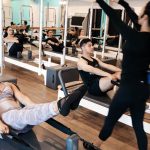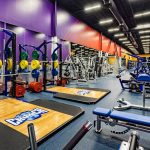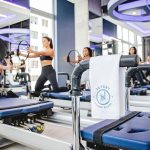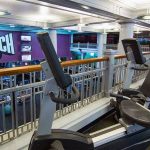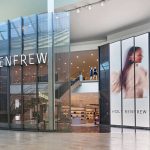Four was the magic number for Nike, Inc. for the company’s second fiscal quarter as total net sales, currency-neutral sales, Nike brand sales, net income and SG&A all fell 4.0% for the period, while overall futures were up 4% at quarter-end. The company has ramped up the owned-retail and direct-to-consumer Internet business to help boost revenues, improve margins, liquidate inventory and maintain brand integrity.
Company President and CEO Mark Parker suggested they continue to gain share in key markets around the world and outperform the industry. “Even as revenues dip a bit, our second quarter shows we are able to deliver an appropriate level of financial performance in a rapidly changing environment,” he said, suggesting that by tightly managing inventory in-house and in the market they have “strengthened our brands, maintained profitability for Nike and our retail partners and positioned ourselves for accelerated growth as consumer confidence returns.”
As Sports Executive Weekly first reported after NKE posted its 2010 first fiscal quarter results, the company has changed the way it reports numbers for the new fiscal year and beyond. Unlike many other companies that are reducing their visibility, Nike, Inc. did exactly the opposite and expanded its regional reporting to look more aggressively at the developing markets and Asia. The company also revised its primary profitability measure from pre-tax income earnings before interest and taxes, or EBIT, which is the primary measure used by the NKE management team and Board to make decisions about resource allocation and to evaluate the performance of individual operating segments.
Revenues for the second fiscal quarter decreased 4.0% in both reported and currency-neutral terms. Revenues for three-month period ended November 30 were $4.41 billion compared to $4.59 billion in the year-ago quarter.
Second quarter net income was also down 4.0% for the period, resulting in net income of $375.4 million, or 76 cents per diluted earnings per share, as lower revenue and gross margin more than offset SG&A savings and a lower tax rate. Wall Street was only looking for 71 cents per share.
Gross margins decreased 200 basis points to 44.5 % of sales, which management attributed to unfavorable exchange rates and higher discounts as they worked to keep inventories clean, partially offset by higher in-line product margins driven by lower raw material and freight costs. NKE said the in-line product margin improvement was the result of a combination of the work done around lean manufacturing and raw materials consolidation.
SG&A improved by 10 basis points to 33.6% of sales, representing a 4% decrease in expenses for the period. Marketing expenses were down 2% for the quarter, due in part to a shift in spending to support fiscal second half marketing initiatives, including Fresh Air and the World Cup, while operating overhead fell 6% overall, reflecting lower costs for headcount, travel and meetings. Retail overhead grew 6%, driven by new store openings. Second half SG&A is expected to increase at a low double-digit percentage rate versus a year ago with a heavier weighting in the fourth fiscal quarter.
The consolidated Nike and Jordan brands posted another sequential improvement in the backlog numbers, turning a negative 6% (-4% currency-neutral) in backlog at the end of fiscal Q1 to a positive 4% (-1% currency-neutral) backlog position for footwear and apparel to be delivered through April 2010. Still, on a currency-neutral basis, only the new Greater China and Emerging Markets regions posted positive backlog growth.
NKE said there is “definitely a strengthening [backlog] trend in the back half of the window, and it does reflect the sequential improvement in the seasonal futures.”
Looking at the second fiscal quarter, total consolidated Nike and Jordan brand sales declined 4.4% for the period to $4.41 billion, while the consolidated Subsidiary business grew 1.3% for the period. Footwear sales for the two brands declined less than 1% for the quarter to $2.32 billion, a marked sequential improvement from the 10% decline seen in the fiscal first quarter, but apparel sales fell 10.0% to $1.27 billion and equipment fell 8.3% to $241.2 million for the period.
On a conference call with analysts, Charlie Denson, president of the Nike brand, said the brand continues to gain momentum in basketball, with the “big story” focused on the LeBron VII and the new Kobe V. In running, Denson pointed to the LunarGlide as their best-selling new shoe of the year.
The new North America region, which includes the U.S. and Canada, saw total revenues decrease 4.2% to $1.50 billion for the combined Nike and Jordan brands, but the decline increased to 7% when excluding the direct-to-consumer business.
Central and Eastern Europe Continues as Tough Market…
Nike North America direct-to-consumer revenues grew 14% for the quarter, driven by new store openings, a 9% comp store sales gain and a 23% increase in on-line sales. Footwear revenues declined 3.7% to $981.2 million and apparel revenues decreased 6.2% to $440.9 million, while equipment revenues grew 1.0% to $74.3 million.
North America footwear revenues for Nike basketball, Jordan and athletic training were higher for the quarter, while all other categories declined. Management cited an improved product line, cleaner distribution and inventories, for a North American apparel business that is “much healthier than it's been in some time.” Apparel full price sales grew 2% while off-price revenues dropped over 60%. As a result, apparel gross margins were reportedly “significantly better than the prior year,” which management said positions the brand “for profitable growth in future quarters.”
Denson said the outlet store program is driving a lot of their positive results in North America, “for all the obvious reasons.” He also said they were very encouraged with the overall gross margin performance in the in-line stores like NikeTown. “So when you add it all together, we are comfortable with where we are at with the U.S. business,” Denson said. “We feel really good about the quality of the business that we are delivering right now. And as the U.S. economy continues to stabilize and hopefully returns to a growth position, we are in a great position to take advantage of it.”
Parker added that one of the things driving their retail performance is better execution. “Our conversion has been better. Our product flow has been a lot better. And as a result, those retail stores are performing better operationally, which is driving a lot of the growth,” said Parker.
Still, Parker said the U.S. in-line owned retail business was down in low-double digits, which he said was a significant improvement versus where it had been as recently as last quarter. He said the outlet business was driving the higher comp store numbers.
North America EBIT increased 9.3% to $290.5 million due to “lower selling and administrative expenses and improved gross margins.” Profitability for Nike's direct-to-consumer businesses also “surged” during the quarter as “significantly lower promotions drove gross margin upsides versus last year.”
Western Europe revenues were down 6.5% to $901.6 million for the quarter, with footwear revenues inching up 0.4% to $514.8 million, but apparel revenue falling 14.8% to $323.4 million as a result of “tough market conditions and lower off-price sales.” Equipment revenue declined 11.1% to $63.4 million. On a currency-neutral basis revenues were down 6%, with footwear flat for the period and apparel falling 15% and equipment decreasing 11%.
Denson said all territories in the region reported lower revenues except the Austria/Germany/Switzerland market, but suggested they “continue to maintain overall market share and share leadership in the five largest markets in Europe.” He said most categories reflected the overall market softness, although action sports and basketball delivered year-over-year growth in Q2.
For the quarter, EBIT for Western Europe declined 4.6% to $175.3 million, as lower revenues were partially offset by reductions in SG&A and favorable FX rates. Gross margins in Western Europe were said to be “essentially flat.”
Central and Eastern Europe revenues fell 24.0% to $260.3 million for the period. Footwear revenue decreased 17.9% to $144.0 million, apparel revenue was down 29.9% to $99.4 million and equipment revenue declined 32.4% to $16.9 million. Excluding currency changes, revenues in Central and Eastern Europe were down 21% compared to the same period last year, with footwear declining 16%, apparel falling 27% and equipment plunging 28% for the quarter when measured in currency-neutral terms.
Nike Sees Improving Trends in China; Emerging Markets Turn Postive
Denson said the macro environment in the CEE region remains “challenging” as most countries continue to experience declining GDP, rising unemployment and significant currency fluctuations. He said Russia and Central Europe have been “particularly difficult,” but there are “some signs of stabilization.” South Africa reportedly posted higher revenue for the quarter as the football (soccer) category drove “strong growth in advance of next year's World Cup.”
EBIT for the CEE region declined 35.8% to $64.4 million due to “lower revenue and gross margins, partially offset by reductions in sales and administrative expenses.”
Greater China revenue, which also includes Taiwan and Hong Kong, declined 3.4% to $403.9 million in the fiscal second quarter, which the company referred to as an “improving trend versus last year's tough comparison to the 2008 Beijing Olympics.” Denson said sell-through at both Nike-owned and partner stores “continue to improve,” and futures have “returned to growth for the spring and summer seasons.”
Footwear revenue was down 0.8% to $209.5 million, apparel revenue declined 6.8% to $169.8 million as overall growth in sportswear, women's training and kids was offset by declines in other categories. Equipment revenue decreased 2.0% to $24.6 million. In currency-neutral terms, revenue for Greater China was down 3% from last year’s Q2, with footwear down 1%, apparel declining 7% and equipment decreasing 2% for Q2.
Company CFO Don Blair said the growth in owned-retail for this fiscal year is less than last fiscal year which was influenced by the ramp-up to the Olympics, but he said they are still adding store space “still seeing a net increase in square footage and number of doors.” Nike still sees some growth opportunity in the higher-tier cities — Beijing, Shanghai, Guangzhou — but they are increasingly focused on the other lower-tier cities where they have less penetration and see more opportunity.
Denson said that one of the big advantages in the lower-tier cities is cost. Shanghai, Guangzhou and Beijing are fairly consistent with a global retail environment, and cost bases are much higher.
Denson said the relatively lower operating costs in the other cities enable them to continue to move forward at a “relatively healthy pace.”
“We look at China as one of the biggest growth opportunities in the portfolio over the next three to five years,” said Denson.
First quarter EBIT declined 7.3% to $125.6 million, as lower revenues and higher demand creation spending more than offset improved gross margins.
Japan second fiscal quarter revenues were down 2.1% to $222.4 million, but were down 14% in currency-neutral terms. Excluding currency exchange rate fluctuations, footwear revenues were down 8%, apparel fell 21% and equipment declined 13% for the quarter. In a tough overall market, running revenues grew 10% for the quarter. EBIT for Japan fell 19.0% to $44.7 million as lower revenues and higher SG&A were partially offset by gross margin improvements.
The Emerging Markets region, which includes South America, Central America, including Mexico, the Pacific Countries, and Korea, saw revenue grow 8.4% to $554.6 million for the quarter, reversing the negative trend from Q1. Excluding currency changes, revenue increased 14% compared to last year, with 17% growth in footwear, a 13% increase in apparel and an 8% decline in equipment revenues, reflecting double-digit growth in all territories except one. EBIT jumped 28.8% to $156.1 million, “driven by revenue and gross margin growth.”
In the Other Businesses segment, which includes Cole Haan, Converse, Hurley, Nike Golf, and Umbro, revenues rose 1.3% to $555.6 million, driven by strong growth at Converse. Revenues at Hurley and Cole Haan were essentially flat while sales at NIKE Golf and Umbro were below the prior year. EBIT for the Other Businesses jumped 65.3% to $35.2 million, as lower SG&A expenses more than offset lower gross margins.
>>> Looking ahead, NKE expects to report mid-single digit revenue growth over the next few quarters, yielding a modest decline in revenue for the full year











